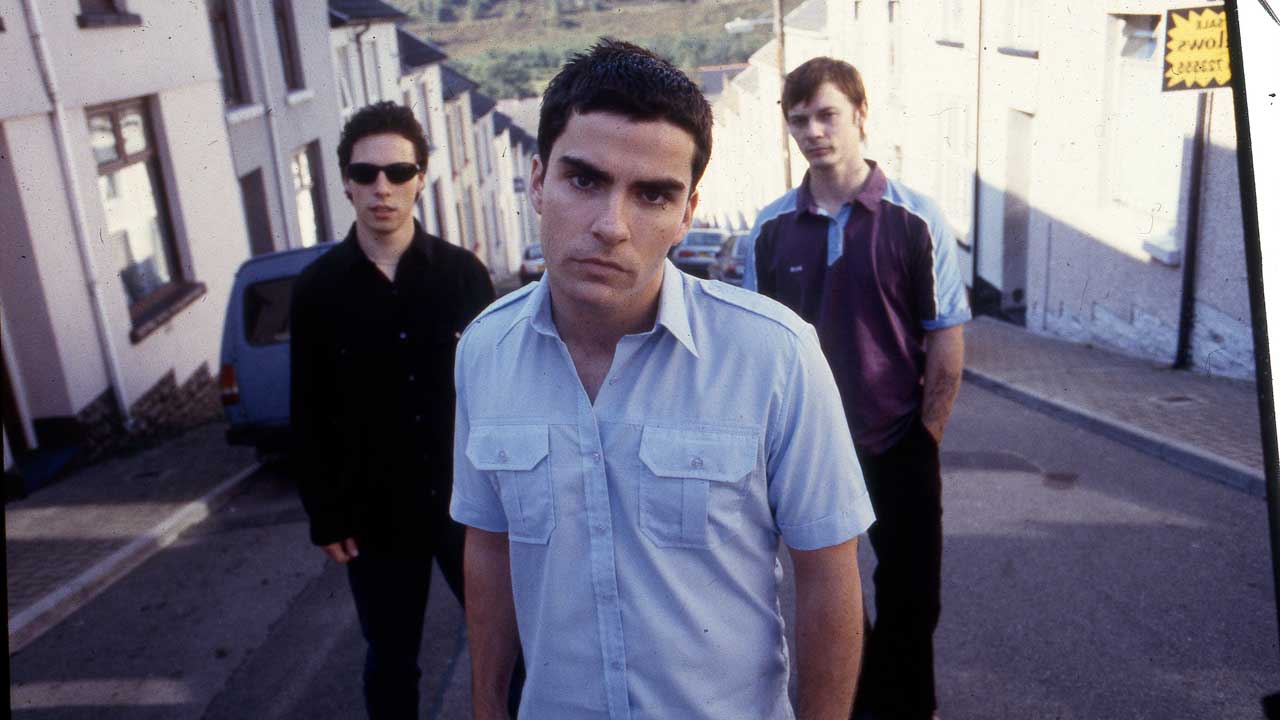With the UK music scene blighted by the sour heroin hangover of parochial Britpop, the evocative Celtic lyricism of Cwmaman’s Stereophonics offered a much-needed antidote to Park Life’s ‘dirty pigeons’ and Digsy’s lasagne dinners. Kelly Jones, the trio’s song-writing frontman, specialised in captivating snapshots of small-town life: three-minute vignettes, rich in imagery that read like the fat-free synopses of zeitgeist-defining kitchen-sink dramas.
With a startling concision, Kelly casually rendered the provincial poetic, the mundane heroic, and Local Boy In The Photograph is generally considered to be his defining masterpiece. But where this subtle account of a small community’s numbed reaction to one young man’s suicide differs from other similarly cinematic examples of Jones’s craft (Looks Like Chaplin, A Thousand Trees, Too Many Sandwiches) is that its innate tragedy is based in stark reality.
“I used to play football with this kid, Paul Borgis,” remembers Kelly, “He was a good-looking, quite cool kid. I lost touch with him for a couple of years but, when I was about 18 and working on the market selling fruit and veg, he turned up and asked what time the trains were.
"Later I was in another mate’s house when someone came in and said he’d jumped in front of a train. He was exactly the same age as I was and it really struck a nerve with me. I didn’t know how he ever had the bottle to do it and I still don’t know the ins and outs of why he did it. Dying that young, you’re probably still in a place where you don’t fully understand what the fuck your problems are anyway.”
The central character in Local Boy…, meanwhile, was written as being a little older, a situation not solely indicative of a man looking for a convenient rhyme. “I made him 23 because that’s how old River Phoenix was when he died,” says Kelly.
The song, ultimately destined to furnish Stereophonics with their debut chart entry in March ’97 (after stalling at a modest 51 on first release it rose to a more creditable 14 in remixed form 11 months later), was originally written while the embryonic three-piece were still known as Tragic Love Company (in tribute to their three favourite bands: The Tragically Hip, Mother Love Bone and Bad Company).
“I didn’t want to make the song a morbid thing,” Kelly continues, “It became more of a homage to him; a celebration of his life. I remembered all the kids going to the place where he died, putting down flowers and spending all their nights there drinking and talking. It was a very descriptive, almost poetic song, describing the seasons, how the air smells, clocks going back, all that kind of stuff.
“I was about 18 or 19 and it was one of the first songs I ever wrote – along with Billy Daveys Daughter, Raymond’s Shop; all those kind of small town songs. I didn’t get signed till I was 22, so it had been sitting about for quite a bit. It was very bizarre for it to be our first hit. I never thought it would be so to then see 50,000 people jumping up and down to it was totally weird. I’d sat writing that on my brother’s bedroom floor at 18 never thinking anybody would fucking hear it. It was just a poem I was writing in a notebook, and for it to become what it became is still bizarre to me.”
Simultaneous to writing and playing in Tragic Love Company, Kelly pursued a concurrent ambition to write scripts. He supplied a couple of dramas to the BBC who recognised sufficient potential to provide him with enough money to buy his first computer, but within six months Stereophonics were offered a record deal with V2.
“It was one of those crossroads decisions,” says Kelly, “but if a decision had to be made, the band was always going to be my first choice.” Nothing represents the two sides of Jones’s creative coin like Local Boy In The Photograph Positively, laden with cinematic imagery, its lyric irresistibly evokes a short script synopsis.
“Local Boy… dates from a time when I was just beginning to write songs as an extension of my scriptwriting. The script thing came first, then they became like mini-stories and eventually songs. I think that’s why the imagery in those songs appealed to so many people. I didn’t realise quite how much like that they were until re-read the lyrics recently; singing them you don’t really notice.
"But when you read them without the music they’re quite cinematic and poetic. You don’t realise as an 18-year-old kid that you are capable of anything like that. I certainly never thought that I could have come up with something that sophisticated, so it’s quite interesting in hindsight.”
Though unusually based in reality it’s a classic example of Kelly Jones songwriting: an imagery-packed snapshot that leaves itself open to an enormous amount of listener interpretation.
“When it first came out people interpreted it in many different ways and I think that’s part of its appeal. To me, that’s the beauty of great song-writing: just listen to Bob Dylan, Neil Young or Kinks songs. If you over-explain what something’s about it takes some of the magic away; if you leave something open, people will relate to it more. Classic soul and folk-inspired songs tell stories but leave enough space for you to put your own life within their context. Like a great book or film, if a song gets people thinking and questioning what it’s about then you’ve done your job really.”
Clearly a very personal song, repetition has robbed Local Boy In The Photograph of none of its poignancy and impact for Kelly Jones.
“Local Boy In The Photograph is the only song that’s been in every set list we’ve ever done. I don’t know why, but it never feels wrong or boring or a task. It’s always placed at the very end of the set and I don’t believe it’s lost anything – I don’t know how, because a lot of songs do lose some of their freshness and appeal and you have to drop them from the set for six months before bringing them back – but that song’s never not been in our show."
Stereophonics' new album Oochya! will be released on March 4th 2022.

